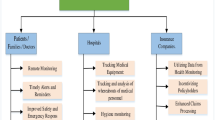Abstract
Wireless networks appeal to privacy eavesdroppers that secretly capture packets from the open medium and read the metadata and data content in search of any type of information through data mining and statistical analysis. Addressing the problems of personal privacy for wireless users will require flexible privacy protection mechanisms adaptively to the frequently varying context. Privacy quantification is prerequisite for enabling a context-aware privacy protection in wireless networks. This paper proposes to quantify the data privacy during wireless communication processes. We give a computational quantification method of data privacy through introducing the concepts of privacy entropy and privacy joint entropy, which permits users and applications to on-demand customize their preferential sensitivity extent of privacy leakage and protection strength. Accordingly, we put forward a data-privacy protection scheme in order to explain how to utilize the proposed computational quantification method of data privacy against the excessive disclosure of data privacy. The results show that the computational quantitation method can effectively characterize the real-time fluctuation of data privacy during communication processes and provide the reliable judgment to context-aware privacy protection, which enables to real-timely control the present data privacy to an anticipated target and to balance a tradeoff between the data privacy and communication efficiency.






Similar content being viewed by others
References
Robert MG (2013) Entropy and information theory. Springer, New York
Samarati P, Sweeney L (1998) Protecting privacy when disclosing information: k-anonymity and its enforcement through generalization and suppression. Technical Report SRI-CSL-98-04. SRI Computer Science Laboratory, Palo Alto
Alfalayleh M, Brankovic L (2014) Quantifying privacy: a novel entropy-based measure of disclosure risk. arXiv preprint arXiv:1409.2112
Machanavajjhala A, Kifer D, Gehrke J, Venkitasubramaniam M (2007) l-diversity: privacy beyond k-anonymity. ACM Trans Knowl Discov Data 1(1):3
Li N, Li T, Venkatasubramanian S (2007) t-closeness: privacy beyond k-anonymity and l-diversity. In Proceedings of the 23rd International Conference on Data Engineering, IEEE, pp 106–115
Dwork C (2006) Differential privacy. In Proceedings of the 33rd International Colloquium on Automata, Languages and Programming, 10–14 July, Venice, pp 1–12
Fung B, Wang K, Chen R, Yu PS (2010) Privacy-preserving data publishing: a survey of recent developments. ACM Comput Surv 42(4):14
Sramka M, Safavi-Naini R, Denzinger J, Askari M (2010) A practice-oriented framework for measuring privacy and utility in data sanitization systems. In Proceedings of EDBT/ICDT Workshops, March 22–26, Lausanne, pp. 315–333
Jiang, T Wang HJ, Hu YC (2007) Preserving location privacy in wireless LANs. In Proceedings of the 5th International Conference on Mobile Systems, Applications and Services, ACM, pp. 246–257
Bertino E, Jiang LW (2008) A survey of quantification of privacy preserving data mining algorithms. In: Aggarwal C, Yu P (eds) Privacy-preserving data mining: advances in database systems, vol. 34. Springer, US, pp 183–205
Agrawal D, Aggarwal CC (2001) On the design and quantification of privacy preserving data mining algorithms. ACM Sigactsigmod-sigart Symposium on Principles of Database Systems, pp. 247–255.
Zhan J (2007) Quantifying privacy for privacy preserving data mining. IEEE Symposium on Computational Intelligence and Data Mining, IEEE, pp. 630–636.
Huang X, Fu R, Chen B et al (2012) User interactive internet of things privacy preserved access control. International Conference for Internet Technology and Secured Transactions, IEEE, pp. 597–602
Gao L, Li M, Zhou W et al (2013) Privacy protected data forwarding in human associated delay tolerant networks. IEEE International Conference on Trust, Security and Privacy in Computing and Communications, IEEE, pp 586–593
Zhang G, Yang Y, Chen J (2013) A privacy-leakage-tolerance based noise enhancing strategy for privacy protection in cloud computing. IEEE International Conference on Trust, Security and Privacy in Computing and Communications, IEEE, pp 1–8
Pawar T et al (2012) Privacy preserving techniques for storage privacy attacks: A survey. International Conference on Hybrid Intelligent Systems, IEEE, pp 283–287
Chen Y, Li Q, He L (2012) An improved association rule privacy protection algorithm research. In: CF Liu, LZ Wang, AM Yang (eds) Information computing and applications: communication in computer and information science, vol. 307. Springer Berlin Heidelberg, pp 225–231
Malandrino D, Scarano V (2013) Privacy leakage on the Web: diffusion and countermeasures. Comput Netw 57(14):2833–2855
Ji Z, Elkan C (2013) Differential privacy based on importance weighting. Mach Learn 93(1):163–183
Chadwick DW et al (2012) A privacy preserving authorisation system for the cloud. J Comput Syst Sci 78(5):1359–1373
Martínez S, Sánchez D, Valls A (2013) A semantic framework to protect the privacy of electronic health records with non-numerical attributes. J Biomed Inform 46(2):294–303
Wang M, Liu D, Zhu L et al (2014) LESPP: lightweight and efficient strong privacy preserving authentication scheme for secure VANET communication. Computing, pp 1–24
Thomas MC, Joy AT (1991) Elements of information theory. Wiley
Shokri R, Theodorakopoulos G, Le Boudec J. –Y, Hubaux J. -P (2011) Quantifying location privacy. IEEE Symposium on Security and Privacy, IEEE, pp 247–262
Acknowledgments
This work was supported by National Nature Science Foundation [61373123, 61572229]; Scientific Research Foundation for Returned Scholars; International Scholar Exchange Fellowship (ISEF) program of Korea Foundation for Advanced Studies (KFAS); Jilin Provincial Foundation for Young Scholars [20130522116JH]; and Jilin Provincial International Cooperation Foundation [20140414008GH, 20150414004GH].
Author information
Authors and Affiliations
Corresponding author
Rights and permissions
About this article
Cite this article
Wang, J., Wu, Z., Liu, Y. et al. Computational data privacy in wireless networks. Peer-to-Peer Netw. Appl. 10, 865–873 (2017). https://doi.org/10.1007/s12083-016-0435-6
Received:
Accepted:
Published:
Issue Date:
DOI: https://doi.org/10.1007/s12083-016-0435-6




